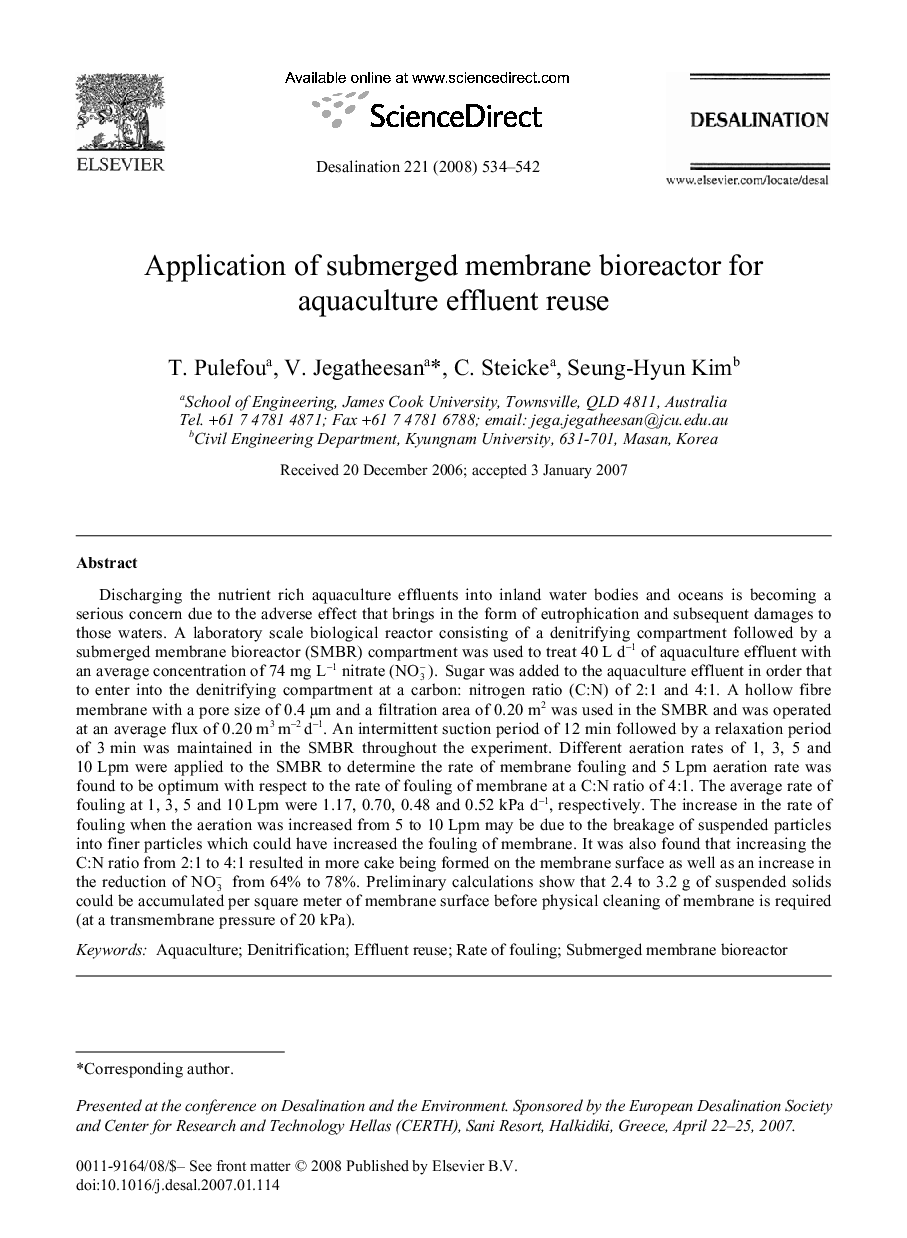| Article ID | Journal | Published Year | Pages | File Type |
|---|---|---|---|---|
| 627666 | Desalination | 2008 | 9 Pages |
Abstract
Discharging the nutrient rich aquaculture effluents into inland water bodies and oceans is becoming a serious concern due to the adverse effect that brings in the form of eutrophication and subsequent damages to those waters. A laboratory scale biological reactor consisting of a denitrifying compartment followed by a submerged membrane bioreactor (SMBR) compartment was used to treat 40 L dâ1 of aquaculture effluent with an average concentration of 74 mg Lâ1 nitrate (NO3â). Sugar was added to the aquaculture effluent in order that to enter into the denitrifying compartment at a carbon: nitrogen ratio (C:N) of 2:1 and 4:1. A hollow fibre membrane with a pore size of 0.4 μm and a filtration area of 0.20 m2 was used in the SMBR and was operated at an average flux of 0.20 m3 mâ2 dâ1. An intermittent suction period of 12 min followed by a relaxation period of 3 min was maintained in the SMBR throughout the experiment. Different aeration rates of 1, 3, 5 and 10 Lpm were applied to the SMBR to determine the rate of membrane fouling and 5 Lpm aeration rate was found to be optimum with respect to the rate of fouling of membrane at a C:N ratio of 4:1. The average rate of fouling at 1, 3, 5 and 10 Lpm were 1.17, 0.70, 0.48 and 0.52 kPa dâ1, respectively. The increase in the rate of fouling when the aeration was increased from 5 to 10 Lpm may be due to the breakage of suspended particles into finer particles which could have increased the fouling of membrane. It was also found that increasing the C:N ratio from 2:1 to 4:1 resulted in more cake being formed on the membrane surface as well as an increase in the reduction of NO3â from 64% to 78%. Preliminary calculations show that 2.4 to 3.2 g of suspended solids could be accumulated per square meter of membrane surface before physical cleaning of membrane is required (at a transmembrane pressure of 20 kPa).
Related Topics
Physical Sciences and Engineering
Chemical Engineering
Filtration and Separation
Authors
T. Pulefou, V. Jegatheesan, C. Steicke, Seung-Hyun Kim,
